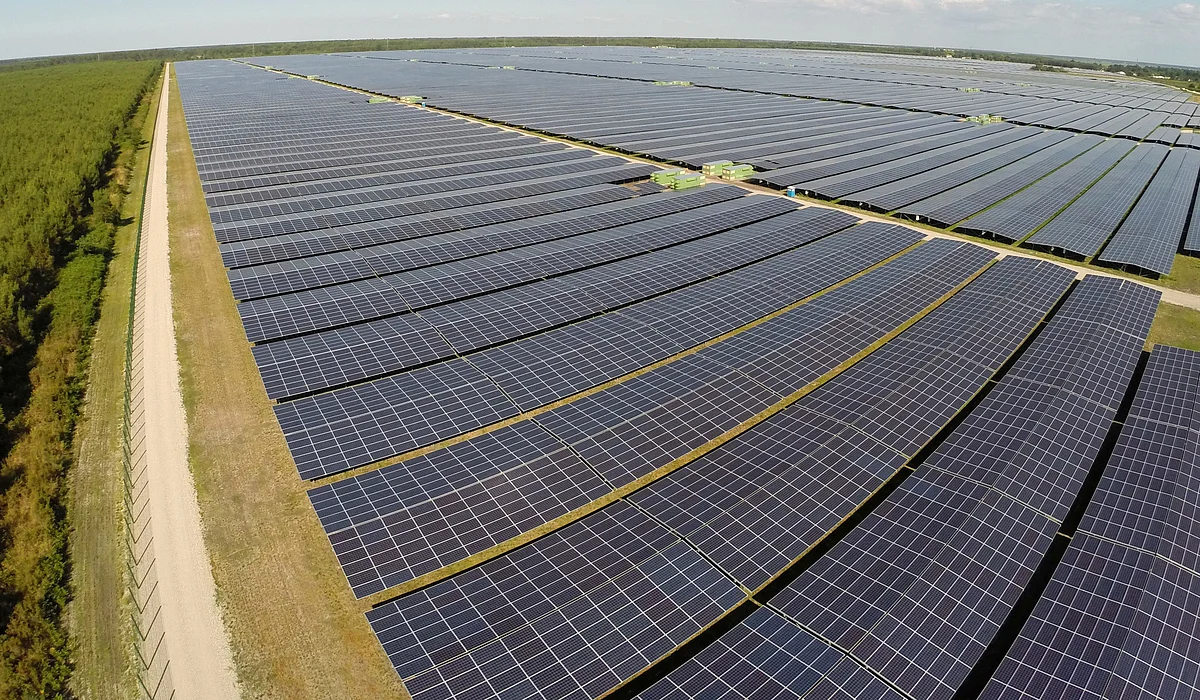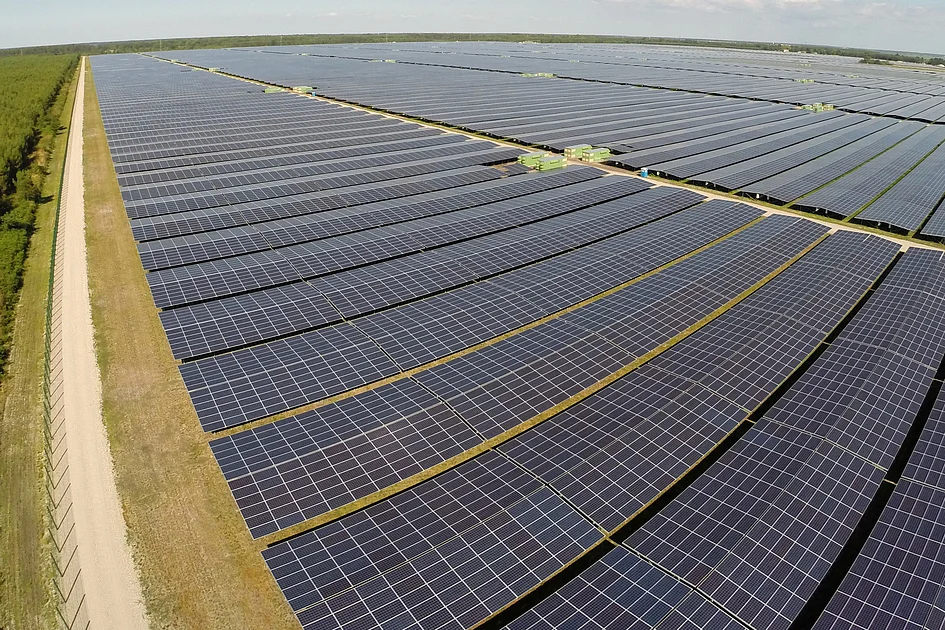
A return of fund inflows into renewable energy stocks is helping to breath new life into these companies’ shares, powering their strongest quarterly rise since the sustainability boom early this decade.
After two years of bearish sentiment and relentless redemptions that made the sector a short-sellers’ hotspot, a fundamental shift in the U.S. power demand outlook and greater policy certainty are luring investors back.
U.S. President Donald Trump’s “One Big Beautiful Bill” and
the subsequent move to direct the U.S. Treasury to restrict tax
credit rules have hit the renewables industry. But money
managers say the outcome was not as bad as many feared, and
offers enough certainty for investors to engage and companies to
resume projects.
“Valuations were so disconnected from the fundamentals that
even confirmation of negative news became a positive catalyst,
said BlackRock portfolio manager Alastair Bishop. “It allowed
investors to start focusing on the fundamentals.”
With the outlook improving, Bishop said outflows from
BlackRock’s active clean-energy strategies had slowed.
Robeco portfolio manager Roman Boner said flows into the
company’s Smart Energy strategy had recently turned positive
after sustained outflows.
Lipper data shows alternative energy funds had their first
net monthly inflow in June, after 25 straight months of outflows
totalling around $24 billion. Investors pulled out money again
in July before inflows returned in August and neared $800
million in September, the largest since April 2022.
Quarterly data from Morningstar shows outflows from Clean
Energy/Tech have shrunk to their lowest since the last recorded
inflow in Q2 2023.
These green shoots coincide with double-digit gains in clean
energy indices, ETFs, and a surge in individual stocks across
the sector — from producers to infrastructure plays.
Bloom Energy is a prime example, teaming up with Oracle
to deploy fuel cells at data centres. Its shares have
rallied 300% in four months to become the biggest weight in the
iShares Clean Energy ETF, a jump some investors view as
over-exuberant.
The Federal Reserve’s dovish tone has also helped.
Capital-intensive renewable projects benefit from lower
borrowing costs, though rates remain well above the ultra-low
levels seen during ESG’s heyday.
Private equity is also moving in, ignoring political noise
to focus on long-term value. Global Infrastructure Partners is
reportedly in talks to buy AES, potentially one of the
largest deals involving a Wall Street power company.
The MSCI Global Alternative Energy Index has
halved since its January 2021 peak, but rose 17% in the three
months to September — its strongest quarter since end-2020 and
more than double the broader market’s gain.
The rally, from a record-low base, has extended into October
and is not purely U.S.-centric
First Solar, a U.S. solar bellwether, climbed about
33% over this period. Portuguese renewable energy company EDP
Renovaveis rose 18%.
Driving the rally is rising electricity demand from Big
Tech’s rapid AI data centre build-outs, electrification of
transport and industry, and the upgrading of grid infrastructure
to handle new loads.
U.S. power consumption, stagnant for over a decade, is
forecast to grow sharply. With gas turbines in short supply and
nuclear years away, solar-plus-storage is emerging as the only
scalable short-term solution.
“Data centres need electricity in two to three years. People
will just add as much renewables as they can. It’s not only the
cheapest source, but also the fastest to build,” said Boner.
These trends show renewable energy is morphing from a sector
driven by policy and subsidies, to one shaped primarily by
market forces, where strong demand requires all forms of energy.
“Every electron counts,” Boner added.
Cumulative new U.S. power generation demand is seen at 450
gigawatts by 2030, based on data presented by renewables
developer NextEra. Of that, only 75 GW is projected from
gas-fired plants, around 40 GW from deferred coal retirements,
and limited nuclear contributions.
Jonathan Waghorn, who manages both sustainable and fossil
fuel funds at Guinness Asset Management, sees renewable earnings
picking up, noting electricity demand forecasts have surged
eightfold in just a few years.
“That’s starting to get earnings momentum into the
companies, especially those with AI, data centre, and
grid-building exposure. The industry has just started to get
going again, and the market is reacting.”
Waghorn’s fund holds stocks involved in electrifying the
energy mix like Eaton and Legrand. He also
likes European names like cable maker Prysmian and grid
services company Spie.
Bishop expects earnings upgrades, typically supportive of
price performance, and sees room for valuations to rise.
At 14.6 times forward earnings, MSCI’s Alternative Energy
Index trades at a 40% discount to world stocks,
vs a 10-year average premium of 7.4%, based on LSEG data,
illustrating how the sector is currently valued well below the
broader market despite historically commanding a premium.
There are still risks – including higher-for-longer interest
rates, policy reversals, and speculative retail excitement in
unprofitable areas like new-generation nuclear – but some
managers say unwinding bearish bets could help sustain the
rally.
“There are still shorts to be squeezed out of the renewable
space,” said Luca Moro, CIO at SpesX, an energy transition fund.

